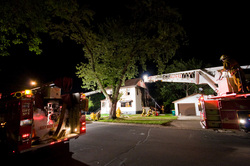
Enjoy:
| 1. Take PICTURES!!!!!! You will need to take pictures of the damage that was caused. Hopefully you have been following our 52 week program and have already taken pictures of your home before the damage to show the difference between the two. 2. Make temporary repairs. Make temporary repairs to prevent further weather related damage. So… cover holes in the roof, walls, doors and windows with plastic or boards. Be careful not to risk your own safety in making the repairs.
3. Call your insurance agent or insurance company to report the damage. Questions to ask Insurance Company/Agent:
4. Save receipts!!! Save all the receipts you have accumulated for additional living expenses. Most homeowner’s policies cover additional living expenses such as food and housing costs, telephone or utility installation costs in a temporary residence, extra transportation costs to and from work or school, relocation and storage expenses and furniture rental for a temporary residence. Most of the time your insurance company will advance you money for these expenses. The payments will be part of the final claim settlement. Make sure you let your insurance company know where you can be reached so that the claims adjuster can give you a check.
5. Prepare for the adjuster's visit. Your claims process may begin in one of two ways.
|

 RSS Feed
RSS Feed
